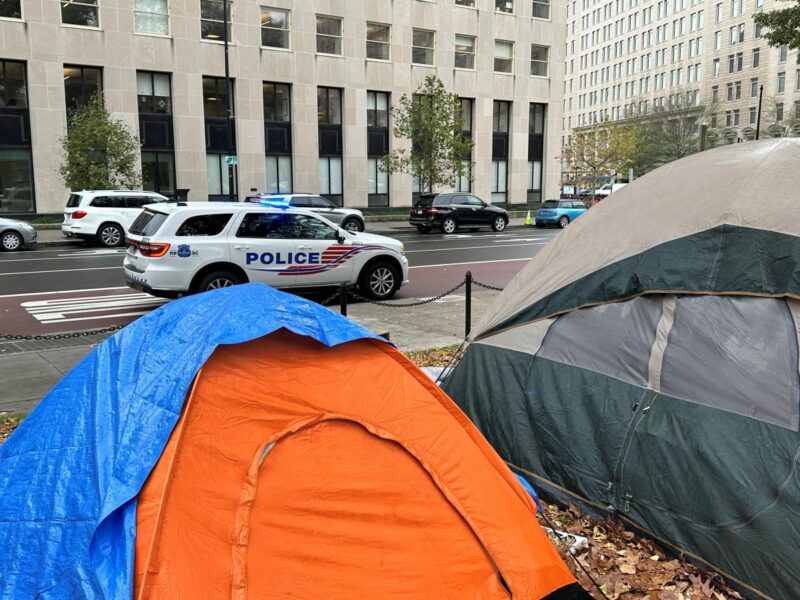Navigating the Role of AI in Addressing Homelessness Including Opportunities and Concerns
Artificial intelligence has already changed how humans approach everything from cars to creative writing. But can it also help solve homelessness?
Experts say the answer is complicated.
Over the last year, homelessness in America increased by 12%. More than 653,000 people experience homelessness on a single night, which is the most that has been recorded since the U.S. Department of Housing and Urban Development began tracking the stat in 2007.
More data is also being collected about homelessness than ever before. The Homeless Management Information System collects personal data such as an individual’s last known residence, social security number, and medical history. Service providers sometimes collect data about an individual’s criminal record.
With all this data in hand, it seems likely that artificial intelligence would improve the ability of service providers to analyze the data they collect.
However, there is also a dark side to the technology that needs to be considered, according to Adam Ruege, director of strategy and evaluation for Community Solutions, a national nonprofit that helps more than 100 local governments and service providers improve their homelessness data collection.
“I think what we know about all this excitement around these new technologies is that it’s moving so fast that it doesn’t consider the people it’s impacting,” Ruege told Invisible People.
There are some notable examples of AI being used to help keep people housed. For instance, Los Angeles County is using AI to help predict households most likely to become homeless following a financial shock. The model analyzes data points ranging from emergency room visits to jail stays and enrollment in public benefits.
Over the past couple of years, the technology has served more than 700 people, with 86% retaining their housing, CalMatters reported.
“If we know who people are who unfortunately are going to have that experience, and they’re already county clients, it’s a real opportunity to do something early on in their lives to prevent that from happening,” Dana Vanderford, associate director of homelessness prevention for LA County’s Department of Health Services, told CalMatters.
Ruege described using AI to predict who will become homeless as “powerful.” He added that the technology could also help service providers with little staff increase their capacity to serve people at risk of becoming homeless.
“AI should never be used to replace somebody’s job, but it could be used to enhance the work,” Ruege said.
There are also some examples of AI being used to infringe on the rights of people experiencing homelessness as well.
The city of San Jose’s police department has created a first-of-its-kind program using AI to recognize tents and cars where people experiencing homelessness are living, The Guardian reported.
San Jose city employees drive a vehicle equipped with a camera through different parts of town “every couple of weeks” to collect footage of the streets and public places. Those images are then fed into computer software from companies like Ash Sensors, Sensen.AI, Xloop Digital, Blue Dome Technologies, and CityRover. According to the report, the software then uses algorithms to determine what vehicles or parts of town people experiencing homelessness are living in.
City employees working on the pilot told The Guardian that the program is not meant to help individuals directly now.
“We’re still learning what can be done. And then once the program is mature, then we can look at the data and see what makes sense,” one employee said.
The program has already ruffled the feathers of people with lived experience, like Thomas Knight, who serves as the executive member of Silicon Valley’s lived experience advisory board. Knight told The Guardian that he believes the data will be used to help the police department clear encampments instead of providing services.
Tristia Bauman, directing attorney for the nonprofit Law Foundation of Silicon Valley, added that she is concerned about the way the program treats people experiencing homelessness altogether.
“The approach to homelessness is to treat unhoused people as blight consistent with trash or graffiti,” she told The Guardian.
How You Can Help
Now is not the time to be silent about homelessness in the U.S. or anywhere else. Unhoused people deserve safe and sanitary housing just as much as those who can afford rent or mortgage.
Poverty and homelessness are both policy choices, not personal failures. That’s why we need you to contact your officials and tell them you support legislation that:
- Streamlines the development of affordable housing
- Reduces barriers for people experiencing homelessness to enter permanent housing
- Bolsters government response to homelessness
Together, we can solve homelessness.













